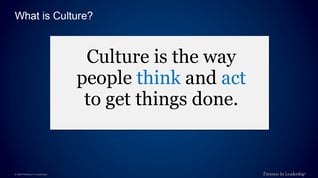 Culture is the sum of the experiences, beliefs, and actions enabling an organization to achieve its Key Results.
Culture is the sum of the experiences, beliefs, and actions enabling an organization to achieve its Key Results.
The right culture practically guarantees success; the wrong culture almost always leads to failure.
Either you manage your culture, or it manages you.
We’ve covered Define Key Results, and the First Step to Accountability, See it.
When you get the People Decision right in your business you achieve your Key Results consistently and predictably. The outcome of getting your People Decision correct is a harmonious culture of accountability.
Propeller: Accelerating Change by Getting Accountability Right, outlines the key steps to Above the Line Behavior: See it. Own it. Solve it. Do it.
Own it.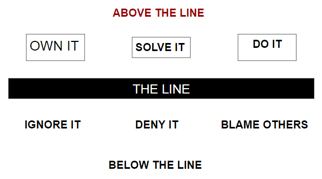
People tend to care more about what they own than what they do not. If your team is falling short of achieving your Key Results, it’s safe to assume they lack ownership.
In Above the Line behavior: Once you See It, you can choose to Own It.
The reality of your own, your team’s, and/or your organization’s situation— once you see it, you may be tempted not to do much to fix It if you think someone or something else will fix it for you.
For your people to Own It, they must first know the Key Results the company is focused on delivering. Then they must know the outcome they are expected to produce to help your business.
Joseph Jimenez, the former CEO of Novartis, shares these two questions every employee deserves an answer to:
- What should I be working on?
- Why is it important?
How many members of your team know these answers?
Ownership
Ownership is the ability to make a connection between where you are today and what you have either done or failed to do in the past to put you in your current circumstances.
Our decisions, actions, and responses to information have led us to our current circumstances. We need to own those realities. When we own them, we find greater power to affect our futures.
With this deeper understanding of what it means to Own It, we can make the connection between where we are today and where we want to be in the future, including what we will need to do in the present to ensure we get there.
Ownership means getting everyone onto the playing field. Roll up your sleeves, go to work, and don’t stop until you accomplish what needs to be done.
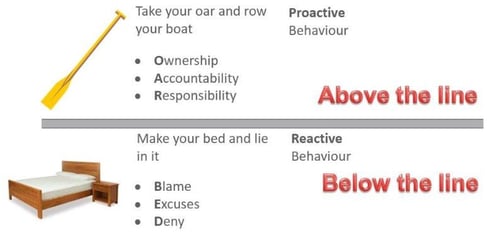 People who Own It are actively involved. They act, make the right things happen, and deliver the Key Results, regardless of whether they agree or disagree with the need or rationale for obtaining those results.
People who Own It are actively involved. They act, make the right things happen, and deliver the Key Results, regardless of whether they agree or disagree with the need or rationale for obtaining those results.
They’re proactive, vs. reactive!
Individuals who don’t agree with a leader’s direction spend most of their time sowing seeds of misalignment, disagreement, resentment, and dysfunction. They pull the organization backward. This (−) Negative Ownership posture undermines the delivery of Key Results.
To change this belief, YOU need to provide experiences to prove the value of the new initiative and leadership’s commitment to follow through.
- Why are we doing this?
- What results will we enjoy if we implement it well?
- What will happen if we don’t?
Leaders can’t tell their people to change their beliefs and expect them to do it.
Leaders must create the experiences needed to shape the desired new beliefs.
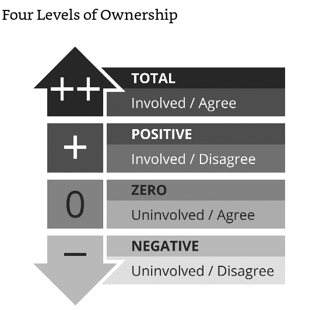 Four Levels of Ownership
Four Levels of Ownership
Two key elements determine each level of ownership: Agreement and Involvement. As you consider each of the Levels of Ownership in more detail, pay close attention to these key elements.
- Negative Ownership = Uninvolved and Disagree: Issues and problems remain unseen and unaddressed as people purposefully withhold information needed to identify, correct, and resolve them. Individuals at the (−) Negative Ownership level rarely remain quiet about their discontent. They work to recruit allies to support their disgruntled positions, becoming a cancer infecting the entire culture. When management invites the infected individuals to leave the organization, colleagues often lament that it took them too long to do so, allowing needless damage to occur. When you add up their lack of agreement and their lack of involvement, you get (−) Negative Ownership. It pulls you backward.
- Zero Ownership = Uninvolved and Agree: This sort of attitude reflects agreement with the need to change but no intent to be involved in its successful implementation. Basically, a leader with (0) Zero Ownership has thoughts like these: “I agree something needs to be done, but it’s not my job to figure this out. It’s their problem. Let them figure it out.” The problem here is, people really believe it’s not their job to be involved. Zero Ownership can be very deceptive.
- Positive Ownership = Involved and Disagree: (+) Positive Ownership propels you forward because people at this level take positive steps, despite the fact they disagree. Consider for a moment your own Above the Line responses to direction or decisions with which you did not necessarily agree. Were you able to get past your disagreement and focus your attention on getting the result? If you were, you were at (+) Positive Ownership.
- Total Ownership = Involved and Agree: This may include a discussion and debate to resolve all concerns and gain agreement on Key Results and a strategy to achieve them. Leaders cannot afford to have any disagreement on Key Results with their Leadership Team. Have the discussion needed, then go forward together to implement the strategy with perfect alignment around what you are trying to achieve. Total Ownership requires agreement and involvement with respect to Key Results.
This 4-minute video (100% Responsibility 0% Excuses) by John Izzo depicts Total Ownership and its effect on Key Results:
To create an environment where everyone is inspired to give their best, contact us today to schedule a free exploratory meeting.
Growth demands Strategic Discipline.
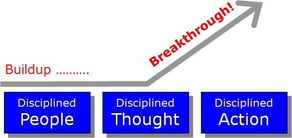 Building an enduring great organization requires disciplined people, disciplined thought, disciplined action, superior results, producing a distinctive impact in the world.
Building an enduring great organization requires disciplined people, disciplined thought, disciplined action, superior results, producing a distinctive impact in the world.
Discipline sustains momentum, over a long period of time, laying the foundations for lasting endurance.
-2.jpg?width=292&name=3%20Disciplines%20of%20Execution%20(Strategic%20Discipline)-2.jpg) A winning habit starts with 3 Strategic Disciplines: Priority, Metrics, and Meeting Rhythms. Forecasting, accountability, individual, and team performance improve dramatically.
A winning habit starts with 3 Strategic Disciplines: Priority, Metrics, and Meeting Rhythms. Forecasting, accountability, individual, and team performance improve dramatically.
Meeting Rhythms achieve a disciplined focus on performance metrics to drive growth.
Let Positioning Systems help your business achieve these outcomes on the Four most Important Decisions your business faces:
|
DECISION |
RESULT/OUTCOME |
|
PEOPLE |
|
|
STRATEGY |
|
|
EXECUTION |
|
|
CASH |
|
Positioning Systems helps mid-sized ($5M - $250M) business Scale-UP. We align your business to focus on Your One Thing! Contact dwick@positioningsystems.com to Scale Up your business! Take our Four Decisions Needs Assessment to discover how your business measures against other Scaled Up companies. We’ll contact you.
NEXT BLOG – Solve It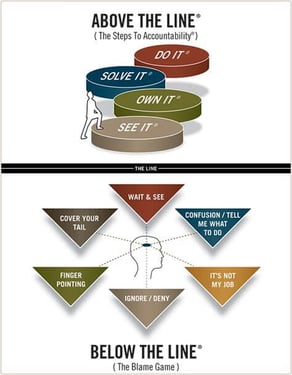
High achievers channel their creative thinking into answering one deceptively simple, yet powerfully propelling question: “What else can I do?” By constantly and rigorously asking this Solve It question, they avoid slipping into the victim cycle when they encounter and address obstacles on the road to success. Next blog, Solve it.






.jpeg?width=150&height=135&name=Hand%20with%20marker%20writing%20the%20question%20Whats%20Next_%20(1).jpeg)

